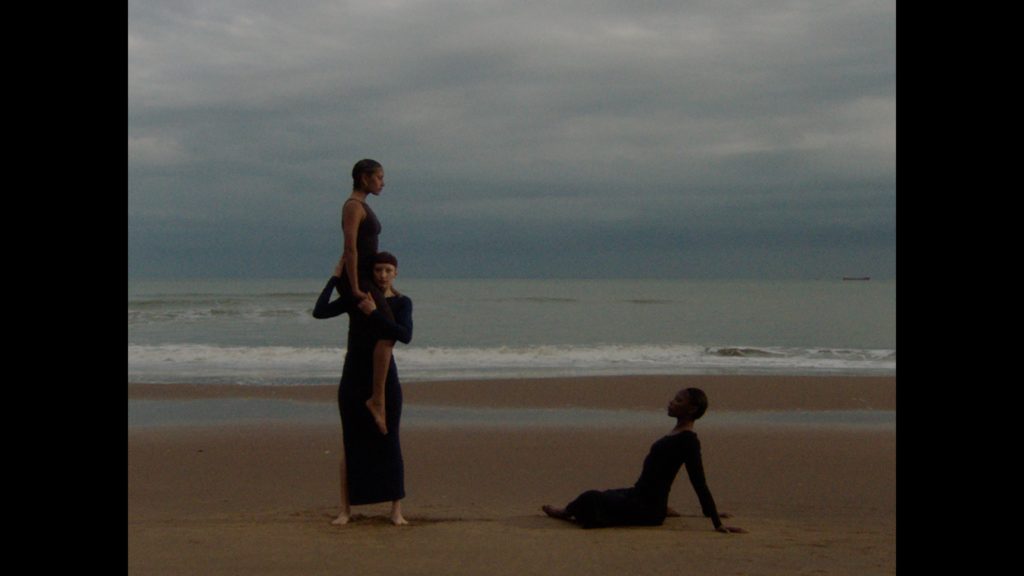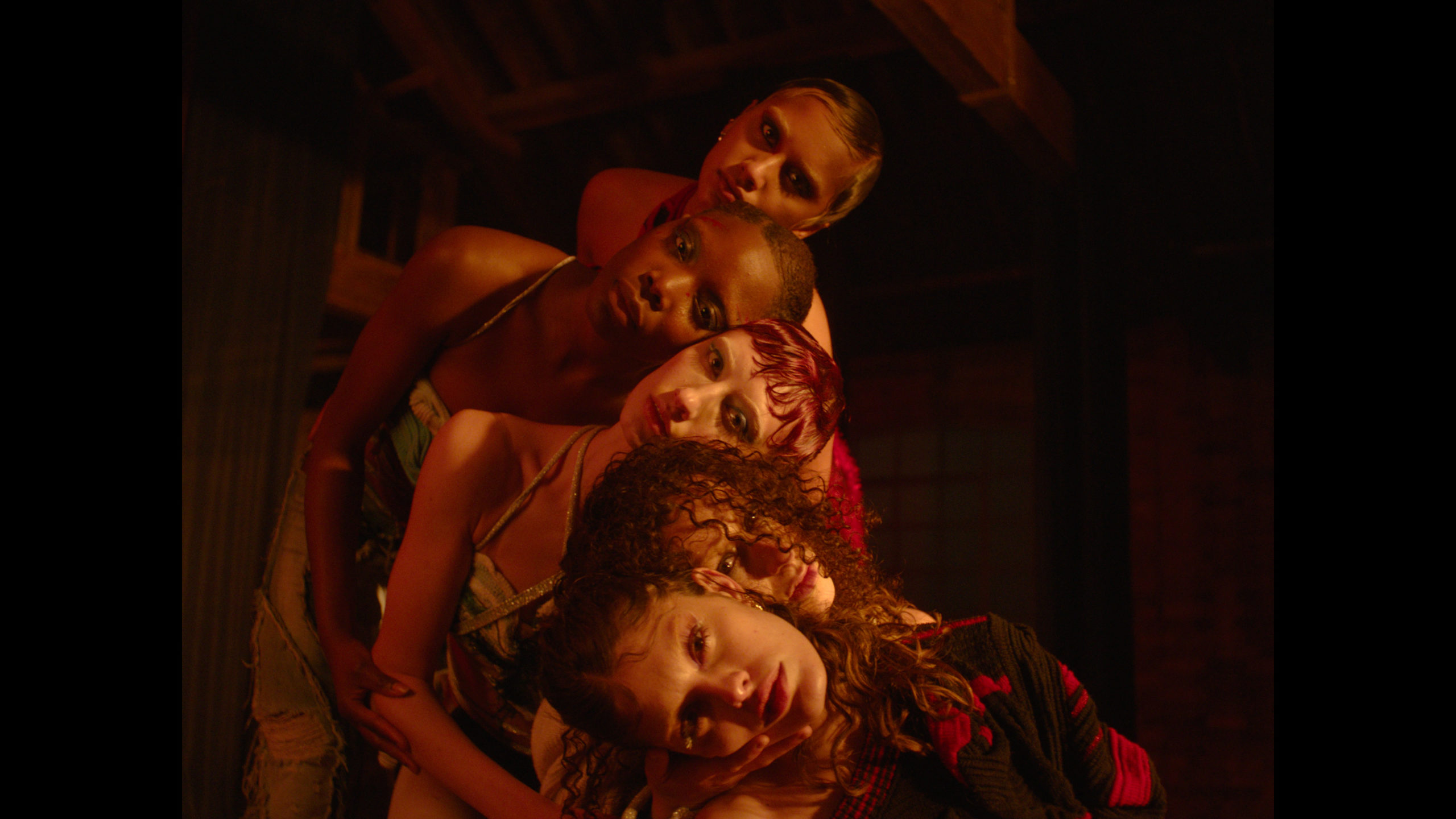Words by Jodie Nunn.
A tantalising and textured tableau of womanhood, To Hold My Love expertly fashions a gilded garment of style, scenery, and sistership. Director and Choreographer Elettra Giunta offers a masterclass in the meshing of movement, spoken word, cinematography, and fashion. To Hold My Love oozes sensuality and self-expression as it narrates and navigates issues of performativity, ownership, projection, expectation, and empowerment: “if there were less consequences I’d dye my hair pink, bleach the shit out of it. If there were less consequences I’d shave my head. If there were less, consequences, I’d mess more with the masculine and feminine. I’d dance with my sisters under the androgynous moon, sunbathe topless on the beach under the masculine sun and bathe naked in the feminine waters.”
Co-directed by Adam Othman, with photography by Will Hazell, this 22-minute screen dance saw its seeding as a stage performance at Resolution Festival, The Place, London; now rooting in film, this piece amplifies the potent essences of womanhood. The aspect ratio shifts with the choreographic structure, placing particular emphasis on certain tableaus, body parts or individuals, the lens itself becoming a choreographic device to wield. Each scene serves as a window to womanhood; the notion of bodies as “sensual beings…as expressions of thoughts, memories, and emotions,” is mirrored in movement language and composition, sewn together with threads of spoken poignance and poeticism.
Guided by the spoken word, and later, the soothing lullaby of Shanley Jorge-Elde, Body Mine becomes the vehicle through which the viewer is awakened. Designed by Aliki Leftherioti, the simplistic, siren soundscape whirs, the overlapping calls of “body mine” a recurrent thread stitching a quilt of vivid vignettes. The accompaniment warps, mechanically melodic, often mirroring the turbulence of shots or the meandering, metamorphosing motifs; morphing into a muffled club thump, the soundscape peaks into ear-ringing territory before returning to softness as lullaby laps against heels of time, coolly closing out the choreography.

Dressed in fashion designer Lynn La Young’s clothes, Aleksandra Walentynowicz, Louisa Fernando, Shanley Jorge-Elde, Ioanna Georgopolou and Jacquelyn Tepper are aglow with presence, intensity, and collective energy as they vaporise from one take to the next. They charge from frame to frame wearing an industrious contemporary vocabulary, often repurposing ballet terminology with contorted convulsions, casual contractions, and thrashing chest pumps. Whilst the collective consciousness of the corps is visually striking, moments of solo or duet are equally as invasive, particularly instances of self-touch paired with the piercing precision of a look down the camera barrel. The choreography has a heartbeat that flits between rich and sweeping to head banging and flailing. Studded with moments of stillness, these pauses paint a portraiture that belongs on the walls of a gallery, as all five dancers materialise in an encompassing embrace.
The extensive wardrobing provides an additional texture to the movement landscape. Each dancer dons their individualism with divinity and ease, a reminder that our femininity is styled by oneself. As the piece pulses onwards, movements begin to spiral with rapid intensity. As the electronic thud reaches the end of the runway, dancers move in to observe as one spins with impressive velocity, whipping their hair to a flickering flame of light, casting an amber glow across the performance space. As the calling to higher realms is answered, the film draws nearer its close, finding tranquillity and eminence in the renaissance splay of all five dancers. Goddesses unto themselves, we are sung out to the heavenly tones of Jorge-Elde as we too bask in the resonances of divine femininity, sisterhood, and strength.
